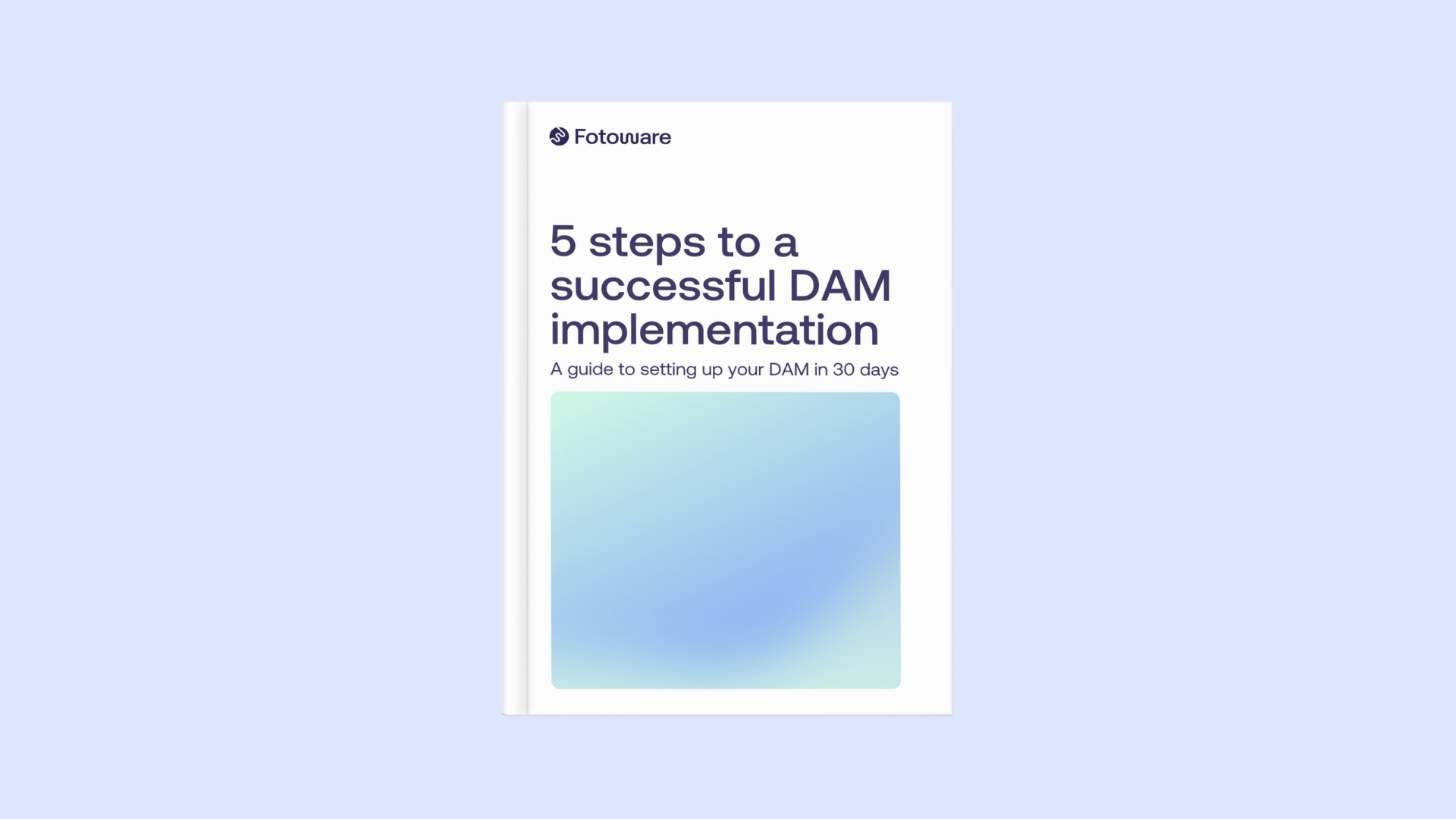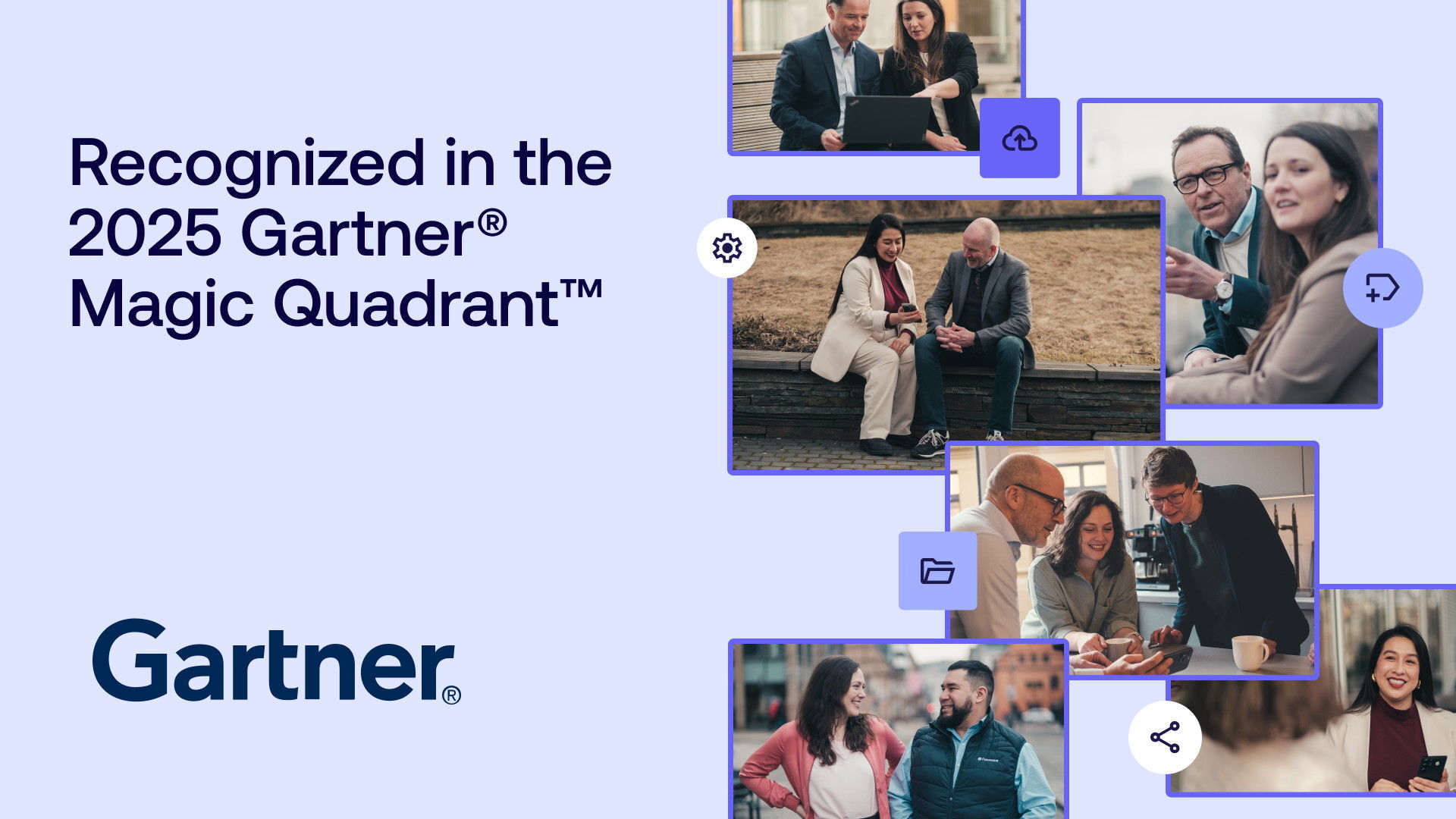
Yes, you can have a DAM in 30 days!
Whether you’re just starting to look into Digital Asset Management (DAM) or you’re experienced with such software, the prospect of acquiring, configuring and migrating your content to a new DAM solution can seem overwhelming. However, it doesn’t have to be. In fact, you can get your DAM set up and ready in only 30 (!) days without compromising on system quality.
In this article, we’ll explain what you can do to get a new DAM system up and running in only 30 days, offering some tips, tricks and helpful resources.
/digital-asset-management-software-buyers-guide.jpg)
DAM myths
There are many reasons as to why organizations may dread replacing their current setup with a (new) DAM system. Oftentimes, their concerns boil down to time- and project management, and uncertainty about whether they can get a solution tailored to their needs without making massive investments upfront.
Fortunately, many of these concerns are based on DAM myths and shouldn’t keep you from getting started with a scalable solution configured to your needs.
Three common misconceptions around DAM implementation are:
1. DAMs require custom codes
This isn’t always the case. In fact, many DAM solutions can be highly customizable and offer an array of capabilities without any coding needed.
Read more: Headless DAM vs. Classic DAM - what's the difference?
2. Once you choose the DAM’s setup, you’re stuck with it
Flexibility is amongst the core values of a DAM compared to traditional media banks, and you’re never stuck with the initial configurations. Additionally, there are many steps you can take to make your initial setup more successful, such as working with DAM consultants, involving stakeholders in the configuration process, and establishing a long-term plan for your system.
3. DAMs are full of hidden costs
This may be true for some vendors, but certainly not all! By choosing a vendor with extensive in-house expertise, you’re better equipped to fully understand what kind of solution you need and how it’s priced, resulting in fewer negative surprises later on.
4. One size fits all
There’s no single best digital asset management system that works perfectly for any organization. In reality, no two businesses share the same structure, goals, or workflows. A DAM that works well for a fast-paced marketing team may fall short for a government archive with strict compliance needs. Make sure the DAM you choose is aligned with your goals!
5 steps of efficient DAM implementation
In order to help you successfully begin (or continue) your DAM journey, we’ve prepared 5 key steps for an efficient DAM implementation. By following each one, you can get your (new) DAM setup up and running in only 30 days, without compromising on system quality or capabilities.
Step 1. Conduct an audit of your content
Step 2. Map out which problems to solve (while keeping an eye on the future)
Step 3. Find a vendor with a extensive in-house expertise and experience with your situation
Step 4. Find a system that doesn’t require coding, but is flexible and easy to scale
Step 5. Migrate your content in phases
If you would like a more in-depth walkthrough of all 5 steps for a successful DAM implementation, you can read the full guide here.

A guide to DAM implementation
We'll take you through 5 key steps for a smooth beginning of your DAM journey.
The ideal DAM implementation process
Phase 1. Introduction meeting
The DAM implementation process typically starts with an introduction meeting where the project is scoped. During this session, you’ll work with the vendor to map out which challenges you wish to solve and what value you expect the DAM to offer your business.
It’s also normal to discuss risk management and communication procedures in this meeting, to ensure that the DAM implementation process is as smooth and risk-free as possible. Towards the end, there should be established a blueprint for the project with an approximate timeline.
Phase 2. System configuration
In the second step, the vendor’s Professional Services Team works to configure the DAM system to fit the needs of the client. The time-frames and costs of these types of project varies depending on how advanced the configurations need to be. For example, if you need custom integrations with third parties, this will likely delay the configuration phase.
It’s also normal to test the configuration with selected assets, to make sure it works as intended.
Phase 3. Content migration
Next up is migrating the rest of your content to the new DAM system. In some instances, once might want to postpone this phase due to time or cost restraints, but for the most part, it should naturally follow system configuration.
READ MORE: The 3 key steps to DAM content migration
If you’ve chosen an experienced vendor, the migration process should be simple and won’t require too much from the client’s side. However, depending on your initial setup, it’s sometimes recommended to set aside some resources for content tagging afterwards, should the content items not be appropriately tagged from before.
Phase 4. Go live and continuously adjust
Once your content is migrated to the new DAM system and appropriately tagged, you’re ready to roll out the new system to your organization.
That said, the journey doesn’t end there, as your DAM is to be considered as a living solution that can be continuously updated and adjusted as time moves on. By selecting an experienced vendor with solid product knowledge, you can ensure that the system adapts and develops in accordance with your needs.

How to get started with Digital Asset Management
If you’ve made the decision to invest in a DAM solution for your team or organization, there should be nothing holding you back from getting started with the implementation process. At Fotoware, we have a dedicated team of DAM-experts that can help you in facilitating workshops and trainings, configuring the system, as well as planning and executing the content migration - and by taking the necessary steps, this can all be done in 30 days.
The secret lies in industry-specific expertise, where our in-house consultants are particularly knowledgeable, having worked with organizations across multiple different industries, helping them with challenges related to content sharing and publication, image- and media workflows, archive management, metadata population, asset lifecycle management, and much more!
Book a meeting with us today and see what the Fotoware solution can offer your team.
Get in touch
Do you want to enhance how you work with your files? Book a meeting with one of our experts and find out how we can set you up for success.

.png)
